The 2016 H. P. Lovecraft Re-read: The Call of Cthulhu
Sunday , 11, September 2016 Fiction, Short Fiction 4 Comments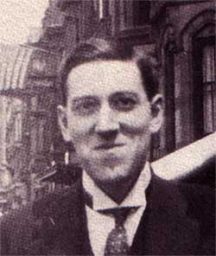 Halloween is less than two months away. I generally shift my meager time for pleasure reading towards the weird and some horror as the days get shorter and nights get cooler.
Halloween is less than two months away. I generally shift my meager time for pleasure reading towards the weird and some horror as the days get shorter and nights get cooler.
Last week I pulled out the big Barnes & Noble H. P. Lovecraft The Complete Fiction to reread some H. P. Lovecraft.
My introduction to Lovecraft happened through a summer job. A co-worker at the Erie Zoo introduced me to Lovecraft in the summer of 1982. I had heard of Lovecraft from my reading of Robert E. Howard. He lent me the Scholastic Book Service The Shadow Over Innsmouth while I lent him REH’s Worms of the Earth (Ace edition).
I did not have an easy time with Lovecraft’s writing style. I read maybe four out of the seven stories that I remember before handing the book back. I went back to college for my sophomore year at the end of the summer. My roommate in my fraternity house had some of the covers with melting/exploding head editions from Ballantine of Lovecraft. What hooked me was “Dagon” from The Lurking Fear. I read through that volume and The Tomb. Right before Thanksgiving, I checked out the Arkham House The Dunwich Horror and Others from Hillman Library at the University of Pittsburgh. Time ran out for a library book coupled with finals at the end of the semester. I have a confession to make. I never made it through “At the Mountains of Madness.” I did get the Ballantine/Del Rey paperbacks of At the Mountains of Madness and The Dream-Quest of Unknown Kadath. I started both of the title novels and did not finish them.
About a month later I checked out the Arkham House Tales of the Cthulhu Mythos. That book had a profound impact as that is where I first read Clark Ashton Smith, 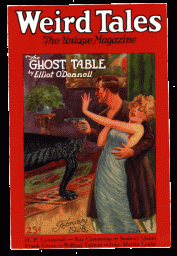 Frank Belknap Long, August Derleth, Henry Kuttner, Robert Bloch, Ramsey Campbell, Brian Lumley, and Colin Wilson.
Frank Belknap Long, August Derleth, Henry Kuttner, Robert Bloch, Ramsey Campbell, Brian Lumley, and Colin Wilson.
This in turn got me to reading just about anything reprinted from Weird Tales. My reading in pulp magazine fiction started with Edgar Rice Burroughs>Robert E. Howard> H. P. Lovecraft> the Lovecraft Circle> Weird Tales> 1930s and 40s science fiction> Hammett and Chandler> Louis Lamour and Gordon D. Shirreffs (post WWII pulp westerns). I never could get into hero pulps.
Most of my reading of H. P. Lovecraft was in the fall of 1982. I bogged down in the longer stuff and just never returned. I reread a few Lovecraft stories strangely on the weekend that Karl Edward Wagner died in October 1994. I ate up all the Clark Ashton Smith and Donald Wandrei I could get my hands on. I am probably a bigger Wandrei fan than Lovecraft fan. That did not keep me from buying issues of Crypt of Cthulhu and other Cryptic Publications from the mid-1980s to the early 90s.
I picked up the big complete Lovecraft at Barnes & Noble (2nd edition with corrections) a couple of years ago. I have dipped into it periodically. I finally finished “The Dream-Quest of Unknown Kadath.”
Last week, I finished a late Lovecraft story that I bogged down and then scanned through back in 1982. The thought came to me. I will reread a major Lovecraft story a week. It has been 32 years and might prove a revelation.
I picked “The Call of Cthulhu” for this week. Might as well start at the beginning of the cosmic horror. According to S. T. Joshi in The Complete Fiction, Lovecraft wrote “The Call of Cthulhu” during summer 1926.
Impressions– Lovecraft is at the top of his game with this story. He packs in a lot in a short amount of space. The story is a break from his neo-gothic pieces that had adorned issues of Weird Tales up until now. He revisited the plot for “Dagon” but expanded on it. The story’s first part is the narrator who is the executor of his granduncle who died suddenly. His granduncle’s paper includes material on the “Cthulhu Cult” and a young sculptor who creates an image of a creature with an octopoid head, reptilian body with wings and claws. Interesting that Lovecraft describes Cthulhu’s face as having tendrils/feelers at on point and tentacles in another description. It is also refreshing to have his native Providence, Rhode Island as one of the settings instead of the fictional Arkham, Massachusetts.
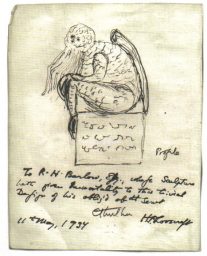
The second section concerns the report of Inspector Legrasse and a police raid on a degenerate cult deep in the swamps. I had totally forgotten about the bat-winged creatures and the “huge, white, polypous thing with luminous eyes” that dwelt in a hidden lake. Joshi’s Lovecraft’s Library has only one Sax Rohmer book listed, Brood of the Witch Queen. “The Call of Cthulhu” so far reads like it has some Fu Manchu influence going on. Also, Lothrop Stoddard’s The Rising Tide of Color comes to mind with the mixed race, non-European tone to the cult. You generally think that if Cthulhu and his minions do rise, it will be Hell on Earth with Godzilla like destruction of cities and the like.
“The time would be easy to know, for then mankind would have become as the Great Old Ones; free and wild and beyond good and evil, with laws and morals thrown aside and all men shouting and killing and revelling in joy. Then the liberated Old Ones would teach them new ways to shout and kill and revel and enjoy themselves, and all the earth would flame with a holocaust of ecstasy and freedom.”
So mankind is going to do most of the job itself instead of Cthulhu. We are almost there now.
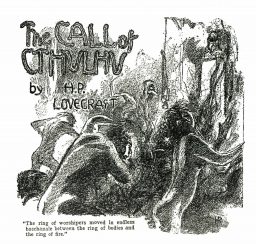 The last section concerns the statement of Gustaf Johansen who is dead by the time the narrator tracks him down. He had died under mysterious circumstances like the narrator’s granduncle. Johansen’s wife gives him the manuscript detailing the voyage of the Vigilant. I had forgotten there was a sea fight between the crew of the Vigilant and the Cthulhu worshipping Kanakas of the Alert and the sinking of the Vigilant. The finding of R’lyeh, risen from the depths of the ocean by whatever seismic activity and the rousing of the not dead Cthulhu is effectively done. There is also action, something Lovecraft is often accused of not having. Johansen rams Cthulhu in the water with the captured Alert.
The last section concerns the statement of Gustaf Johansen who is dead by the time the narrator tracks him down. He had died under mysterious circumstances like the narrator’s granduncle. Johansen’s wife gives him the manuscript detailing the voyage of the Vigilant. I had forgotten there was a sea fight between the crew of the Vigilant and the Cthulhu worshipping Kanakas of the Alert and the sinking of the Vigilant. The finding of R’lyeh, risen from the depths of the ocean by whatever seismic activity and the rousing of the not dead Cthulhu is effectively done. There is also action, something Lovecraft is often accused of not having. Johansen rams Cthulhu in the water with the captured Alert.
Lovecraft’s prose is actually pretty clean in this story. I read some near incomprehensible prose last week in a later story. The story is a mystery, uses Fu Manchu conspiracy, and tops it off with an outer space Kaiju. This may be the first time he used the term “cosmic horrors.” Robert E. Howard in a letter to “The Eyrie” in the April 1928 issue used the term “cosmic horror’ to describe “The Call of Cthulhu.” This is possibly the first use of the term as a description.
Farnsworth Wright, editor of Weird Tales, rejected “The Call of Cthulhu” the first time Lovecraft submitted it. Luckily, Donald Wandrei stopped in Chicago while traveling to see Lovecraft and put pressure on Wright to rethink his stand. Wright backed down and bought the story. It would appear in the Feburary 1928 issue. Lovecraft went to bat for Wandrei’s story “The Red Brain.” Wright was an editor who was comfortable with middling pulp writers as Otis Adelbert Kline, Arthur J. Burks, and Seabury Quinn. Wright also had a penchant for real bottom feeder fiction that would make up about 25% of any average issue of Weird Tales. Lovecraft and Wandrei’s pushing at the boundaries made Wright uncomfortable and he would more likely reject a story than accept it.
Lovecraft was the one who picked up various elements and blended them together for a groundbreaking story. Read A. Merritt’s “The Moon Pool” (original story, not the novel) after reading “The Call of Cthulhu” to compare and contrast.
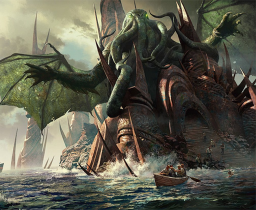
The Dulwich Horror and the Color out of Space contain some excellent steps forward in the evolution of Cthulhu. Lovecraft is as hard to define as the great cosmic horror he created. He moved the genre forward considerably. When he is good he lives eternal and when he is bad we are reminded that he is a “pulp” writer and perhaps shouldn’t be too hard on him. Lovecraft’s Supernatural Horror in Literature makes an interesting if somewhat out dated read for those who are committed to his way of thinking.
I think I like the idea of “Lovecraftian” more than the actual Lovecraft fiction. I have a hard time reading it. But I love listening to audio versions read by a good reader with some atmosphere that suits the story. I don’t read a lot of horror, but when I do, I prefer action-oriented tales. I lean more towards Howard…
I’ve read ‘The Call of Cthulhu’ a number of times and am still in awe of its ambition. The way the three separate narratives, though very different, are linked has always impressed me and there’s a palpable sense of horror throughout.
I hadn’t considered a Sax Rohmer influence, incidentally, but, now that you mention it, I can see it in the middle section especially. And his prose here *is* pretty clear. Perhaps not (quite) the best of his tales, but certainly up there.